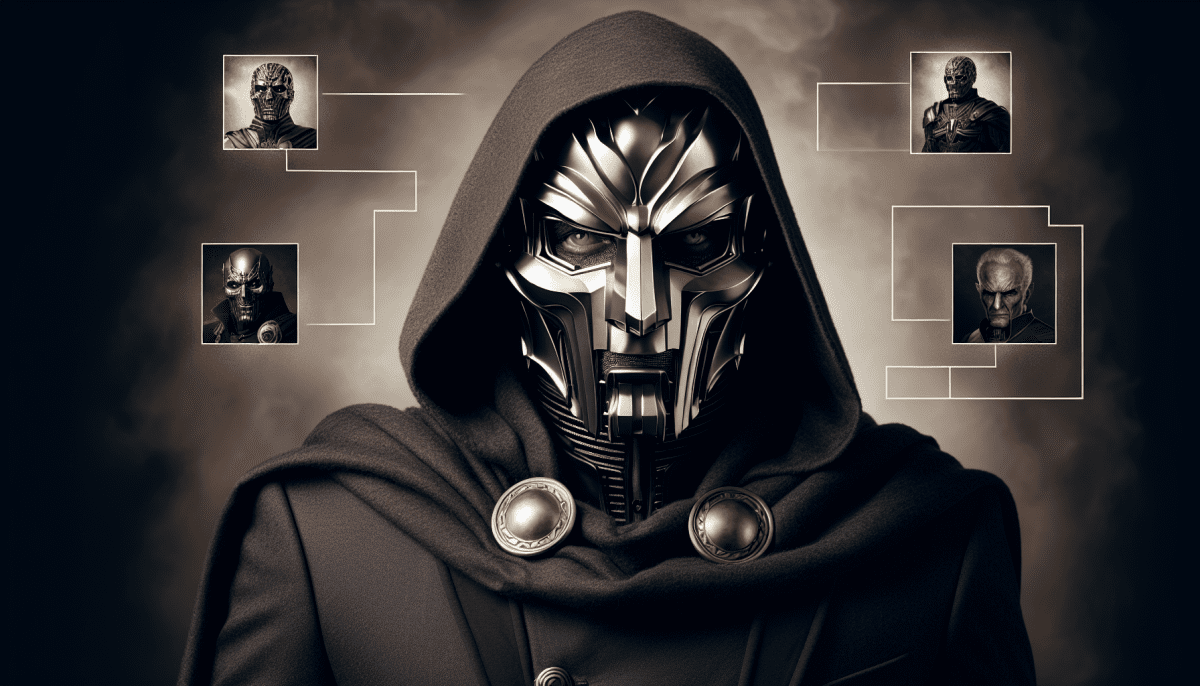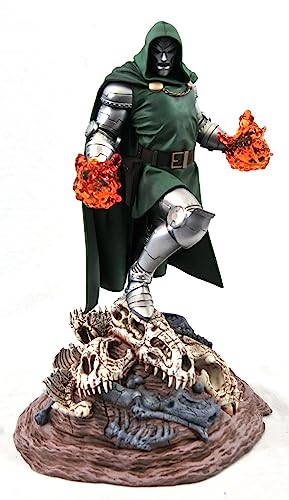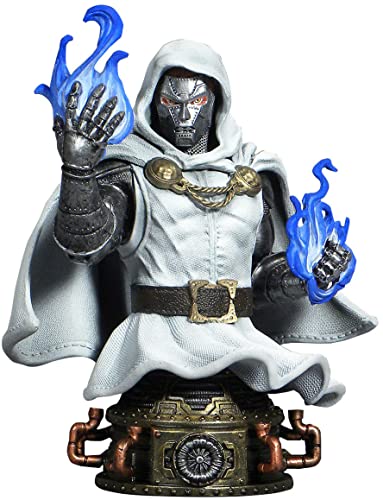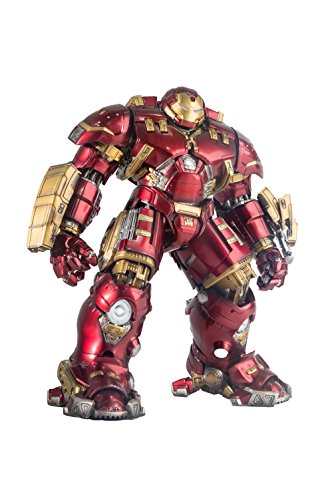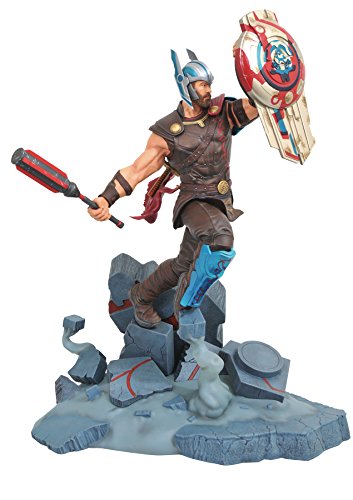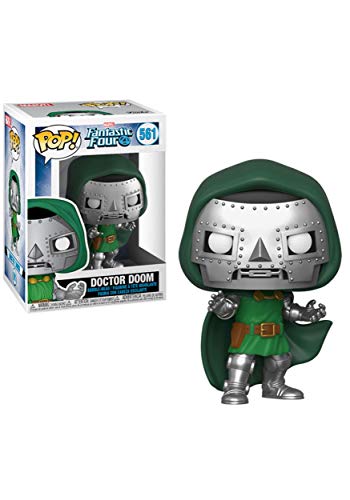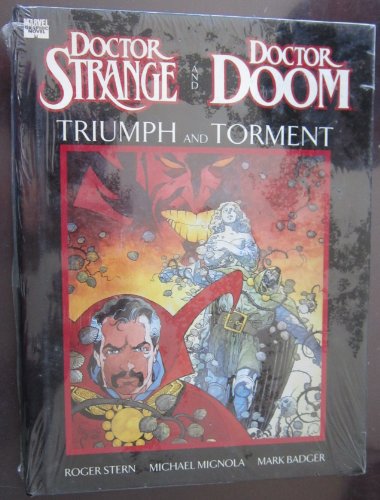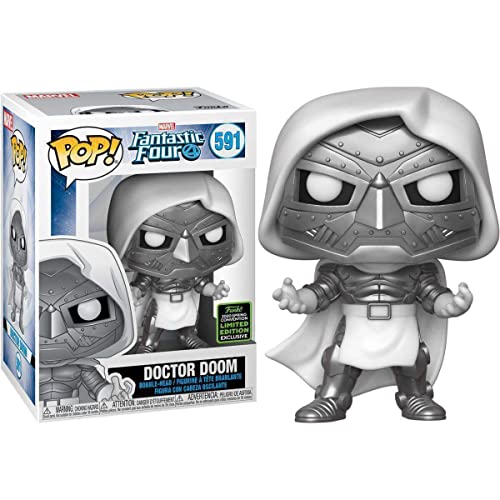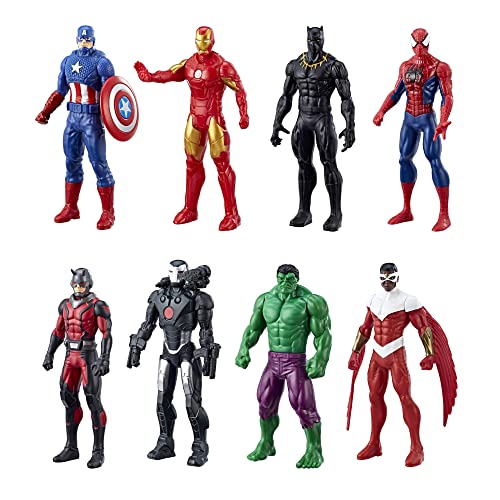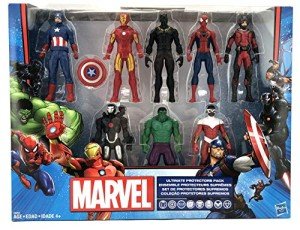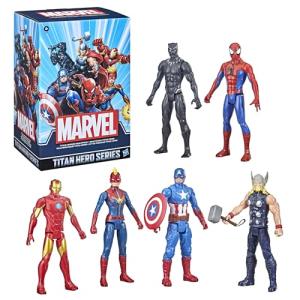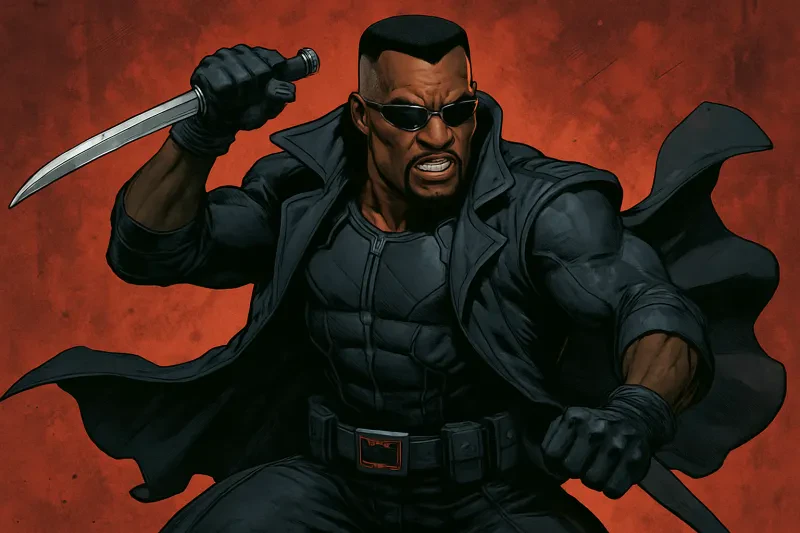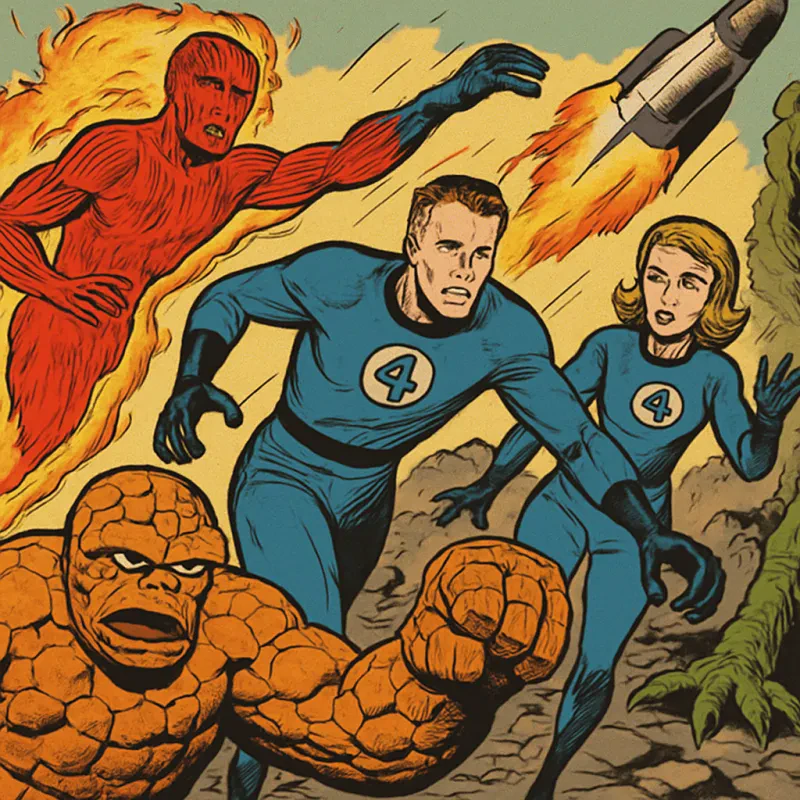The Evolution of Doctor Doom's Character in Comic Lore
Doctor Doom, a prominent villain in the Marvel Universe, has a rich and complex history that reflects both his roots and his evolution. Created by writer Stan Lee and artist Jack Kirby, Victor Von Doom first appeared in "The Fantastic Four" #5 in 1962. From the outset, his character was layered; he combined elements of genius intellect, sorcery, and a tragic backstory rooted in personal loss.
Doom's origin story is steeped in tragedy. As a young boy in the country of Latveria, he was orphaned and raised by a Roma family. Driven by a desire to honor his mother, who was burned at the stake for witchcraft, he immersed himself in both science and magic. This duality contributes to his complex character; he is as much a scientist as he is a sorcerer. This blend of intellect and mysticism became a defining trait, setting him apart from other villains who primarily relied on brute strength or technological prowess.
As his story progressed through the 1960s and 1970s, Doctor Doom evolved from a mere antagonist to a multi-dimensional character who garners sympathy and respect. Writers began to explore his motivations more deeply, illustrating his desire for power not out of mere malice, but as a means to achieve what he perceived as a greater good for his people. This moral ambiguity made Doom more relatable and nuanced, allowing readers to see a fragmented hero within the villain.
In the 1980s, creators like John Byrne and Roger Stern further expanded Doom's character. He wasn’t just a villain fixated on conquering the world; he began to show moments of vulnerability and depth. John Byrne’s "The Trial of Reed Richards" storyline, for example, provided insight into Doom's psyche, showcasing his obsession with proving himself superior not just to the Fantastic Four, but to the world itself. Doom’s quest for validation drives many of his actions, making him a character readers can both love and loathe.
$59.99
4.47 out of 5 starsDoctor Doom PVC Statue from Marvel Gallery Diamond Select
Unleash the power of Doctor Doom with this stunning PVC statue from Marvel Gallery Diamond Select
Product information
Product Review Score
Product links
By the 1990s and 2000s, Doctor Doom took on new layers. Comic series like "Doom: The Emperor Doom" and "Doom 2099" showcased alternative timelines and realities, allowing for experimentation with his character. In “Doom: The Emperor Doom,” he uses his powers to alter the very fabric of reality, illustrating his complex relationship with power. He isn’t always the tyrannical villain, occasionally showing signs of reluctance and even nobility in his ambitions. This era established him not only as a powerful adversary but also as a tragic figure whose ambitions often lead to his own downfall.
Doom's relationships with other characters, particularly the Fantastic Four, also underwent significant changes. His longstanding rivalry with Reed Richards became more intricate. Instead of simply seeking to defeat his enemies, Doom's interactions transformed into a game of wits and intellect, reflecting a mutual respect that posed questions about morality and the nature of good versus evil. Their complex relationship allows readers to explore themes of jealousy, obsession, and ultimate failure in one's pursuits.
In the modern comics, Doctor Doom has continued to resonate with new and seasoned fans alike. Recent storylines, such as "Infamous Iron Man," showcase him taking on a hero's mantle as Iron Man. This transition represents the culmination of his journey—an exploration of redemption and identity. This new direction highlights the ongoing evolution of his character, allowing readers to witness Doom struggling with his past while trying to carve a new path.
Today, Doctor Doom stands as a testament to the power of character evolution in comics. From a simple villain seeking revenge to a complex figure wrestling with inner demons and moral dilemmas, Doom embodies the multifaceted nature of humanity itself. His evolution invites readers to question the boundary between hero and villain, making them ponder whether redemption is ever truly attainable.
Ultimately, the evolution of Doctor Doom’s character reflects a journey marked by depth, tragedy, and unapologetic complexity. Fans have not only witnessed a villain; they've seen the birth of a tragic anti-hero. His multifaceted nature continues to evolve, captivating audiences and ensuring his place in comic lore for generations to come. As Marvel continues to expand its universe, one can only speculate where Doctor Doom's character will venture next.
Doctor Doom embodies the essence of evolution in comic lore—proof that even villains can hold compelling stories that lead to profound reflections on power, loss, and the quest for identity.
And now In an unexpected casting announcement in July of 2024, actor Robert Downey Jr. has been confirmed to take on the iconic role of Doctor Doom in the upcoming film "Fantastic Four: First Steps." Known for his portrayal of Iron Man in the Marvel Cinematic Universe, Downey Jr. will now embody a new version of the formidable Victor Von Doom. This casting decision has sparked excitement and intrigue among fans, as they eagerly anticipate Downey Jr.'s interpretation of the complex and enigmatic character.
Exploring Doctor Doom’s Relationships with Other Marvel Heroes
Doctor Doom, one of Marvel Comics' most complex villains, is known not just for his technological genius and ruthless ambition but also for his intricate relationships with various Marvel heroes. His connections span decades of comic book history, revealing the layers of his character that go beyond mere villainy.
$249.84
4.13 out of 5 starsDr. Doom 40th Anniversary White Armor Bust
Celebrate the iconic legacy of Dr. Doom with this stunning 40th Anniversary white armor bust, perfect for collectors and fans alike
Product information
Product Review Score
Product links
At the core of Doctor Doom's character is Victor Von Doom, a brilliant scientist and sorcerer from Latveria. His relationships with superheroes are often fraught with tension, forged through conflict, rivalry, and, at times, unexpected alliances. Below, we explore some of the key relationships Doctor Doom has with notable Marvel heroes.
Doctor Doom and the Fantastic Four
Perhaps the most significant and longstanding rivalry exists between Doctor Doom and the Fantastic Four, particularly Reed Richards, also known as Mr. Fantastic. Their relationship is defined by their contrasting ideologies—Doom’s ambition for power versus Richards’ desire for altruism. The nuanced dynamic goes beyond simple antagonism; at times, they show mutual respect for each other’s intellect.
Another member of the Fantastic Four, Susan Storm (the Invisible Woman), has had a more complex relationship with Doom. In various storylines, Doom has shown a fascination with Susan's power and intelligence, occasionally trying to manipulate or sway her. This psychological play adds layers to their interactions, revealing his character's deeper desires beyond conquest.
Doctor Doom and Spider-Man
Doctor Doom shares a stormy relationship with Spider-Man characterized by conflict, misunderstanding, and occasional camaraderie. While Spider-Man often sees Doom as a significant threat, there are story arcs where the two characters find common ground. For instance, in certain narratives, they team up to battle a more potent adversary or share philosophical discussions about power and responsibility.
4.42 out of 5 starsIron Man Hulkbuster Collectible Figure - Comicave Studios Marvel
Bring home the ultimate collectible with this Iron Man Hulkbuster figure from Comicave Studios Marvel
Product information
Product Review Score
Product links
Doctor Doom and Iron Man
The tension between Doctor Doom and Iron Man (Tony Stark) is steeped in competition and technological rivalry. Both are geniuses in their own right, leading to a battle of wits and tech innovations. This relationship often highlights the ethical dilemmas concerning the use of technology, as both characters grapple with the consequences of their actions.
Interestingly, while they mainly stand opposed to each other, there have been instances where they join forces against mutual threats. These alliances, although temporary, showcase Doom's and Iron Man's understanding of the landscape of villainy and heroism in the Marvel Universe.
Doctor Doom and Thor
Doom's relationship with Thor is unique, rooted in mythology and power struggles. As a character who often dabbles in sorcery, there are moments where Doom's ambitions put him at odds with Thor, the God of Thunder. Their encounters reveal not only the physical battles but also a clash of ideologies—Doom's lust for domination versus Thor's loyalty to Asgard and Earth.
$149.00
4.48 out of 5 starsThor Gladiator Statue - Marvel Milestones Edition
Collect this highly detailed Thor Gladiator Statue from the Marvel Milestones Edition for your Super Hero collection today!
Product information
Product Review Score
Product links
Occasionally, Doom's fascination with Asgardian magic leads him to seek alliances or artifacts to enhance his own powers, resulting in intriguing and often turbulent interactions with Thor.
Doctor Doom and Scarlet Witch
In the Marvel Universe, Doctor Doom’s interactions with Scarlet Witch often illustrate his darker motivations. While he perceives Wanda Maximoff’s reality-warping abilities as tools for his gain, their encounters also highlight the moral ambiguity surrounding his character. Doom occasionally attempts to manipulate Wanda, exposing his willingness to exploit others for his pursuits.
Diverse Dynamics
The relationships that Doctor Doom forges with other Marvel heroes demonstrate a fascinating interplay of conflict, respect, and manipulation. What sets him apart from many traditional villains is his ability to adapt—sometimes seeking collaboration when it benefits him and other times displaying ruthless ambition to maintain supremacy.
Exploring these connections allows readers to relate to Doctor Doom on a deeper level. His character isn’t merely one-dimensional; instead, it presents the complexities of ambition, morality, and the fine line between hero and villain. Through his interactions, Doom adds richness to the Marvel landscape, making him one of its most compelling figures.
| Hero | Key Dynamic |
|---|---|
| Reed Richards | Rivalry & Mutual Respect |
| Susan Storm | Manipulation & Interest |
| Spider-Man | Conflict & Temporary Alliances |
| Iron Man | Competition & Ethical Dilemmas |
| Thor | Power Struggles & Mythological Clashes |
| Scarlet Witch | Manipulation & Exploitation |
Ultimately, the essence of Doctor Doom's relationships with other Marvel heroes adds depth to not only his character but also the greater narratives found within the comic universe. This complexity keeps fans engaged and invested in the evolving saga of Doctor Doom.
The Philosophical Themes in Doctor Doom's Quest for Power
Doctor Doom, a formidable character within the Marvel Universe, embodies a complex blend of ambition, intellect, and philosophical musings related to power and morality. His journey often reflects deep-rooted themes that resonate with anyone who has sought power or questioned their own motivations. Understanding these themes not only enriches the reading experience but also offers insight into wider philosophical debates about authority and human nature.
One of the most striking aspects of Doctor Doom’s character is his relentless pursuit of power. This quest can be traced back to his tragic origins—Victor Von Doom was a brilliant scientist from Latveria who suffered the loss of his mother and grew up with a profound sense of inadequacy. Power, for Doom, symbolizes not just dominion over others, but control over his own destiny. His character resonates with the philosophical notion articulated by Nietzsche that asserts the will to power is a fundamental driving force in human beings. By establishing himself as a tyrant, Doom believes he can impose order on chaos, providing a stark contrast to his earlier life filled with pain and uncertainty.
$24.95
4.72 out of 5 starsDoctor Doom Funko POP! - Marvel Fantastic Four
Unleash the power of villainy with this iconic Doctor Doom collectible that brings the infamous Marvel character to life
Product information
Product Review Score
Product links
The relationship between destiny and free will is another pertinent theme in his narrative. Doom often finds himself grappling with the notion of fate. Despite his formidable intellect and resources, he is repeatedly thwarted by the heroes of the Marvel Universe, particularly the Fantastic Four. This recurring conflict raises questions about whether Doom is truly in control of his actions or if he is ensnared in a predetermined path, illustrating a classic philosophical dilemma. Are we truly masters of our fate, or are we merely playing our roles in a cosmic drama?
In his quest for power, Doctor Doom also embodies the ethical conundrum between utilitarianism and deontological ethics. Doom frequently justifies his tyrannical behavior as a means to achieve a greater good—his belief that absolute power allows him to ensure peace and prosperity for his people. This is reminiscent of utilitarian thought, which prioritizes the greatest good for the greatest number. However, his methods include manipulation, oppression, and violence, challenging the moral righteousness that dictates that the ends can justify the means. This tension prompts readers to consider the ethical implications of pursuing power.
Moreover, Doctor Doom’s intellectual superiority is consistently portrayed as a double-edged sword. He doesn’t just use brute force to achieve his goals; rather, he strategically employs his vast knowledge in science and sorcery. This interplay of intellect and emotion highlights the philosophical exploration of the relationship between reason and passion. Can a leader be truly just if driven by emotion, or does the wielding of power necessarily corrupt the heart and mind?
Notably, Doom's character also sparks discussions about identity and the self. His mask, a physical representation of his persona, symbolizes the conflict between his public persona as a conqueror and his inner vulnerabilities. This existential dichotomy evokes themes from existential philosophy, particularly that of Sartre, who posits that existence precedes essence. For Doom, the mask creates a persona that overshadows his tragic past, allowing him to embody power while concealing his insecurities. This raises the question of what it means to truly know oneself in the pursuit of power.
$67.99
4.24 out of 5 starsDoctor Strange vs. Doctor Doom Marvel Graphic Novel
Breathtaking battle between two formidable foes in this explosive Marvel graphic novel
Product information
Product Review Score
Product links
Ultimately, Doctor Doom's quest for power is a reflection of multiple interwoven philosophical threads that invite the audience to ponder enduring questions about authority, identity, morality, and the human condition. His journey extends beyond the confines of comic book pages; it resonates with anyone who has ever sought to understand the nature of power—what it means, how it can be wielded, and ultimately, what one sacrifices in its pursuit.
As readers engage with Doctor Doom’s character, they are not just spectators but participants in a deeper conversation about the nature of humanity. By understanding his philosophical dilemmas, we sharpen our own perspectives on power, leadership, and ultimately, the complexity of the human experience.
In examining Doctor Doom, we find that he is more than a villain; he serves as a mirror reflecting our own struggles with authority, ambition, and the moral choices that define us. The more we delve into his philosophical themes, the richer our understanding of both the character and ourselves becomes.
Doctor Doom in Popular Culture: Beyond the Comics
Doctor Doom stands as one of the most iconic villains in the Marvel Universe, but his influence stretches far beyond comic books. This character has permeated various forms of media, from films and video games to television shows and merchandise, becoming a cultural phenomenon. Understanding Doctor Doom's impact on popular culture offers insight into how comic book characters can resonate with audiences of all ages.
In film, Doctor Doom has made several appearances, most notably in the 2005 film "Fantastic Four" and its sequel. Despite mixed reviews of the films, his portrayal introduced a broader audience to the character, highlighting his complex backstory, which includes elements of tragedy and ambition. The character's evolution, as someone who transforms from loyal friend to bitter enemy, captivates viewers. Moreover, his quest for power and control reflects modern societal themes, making him relatable to contemporary audiences.
When it comes to animated adaptations, Doctor Doom has featured prominently in various series. For example, the classic "Fantastic Four" animated series of the 1990s delved into his character, showcasing his intelligence and leadership qualities. In later series, such as "Ultimate Spider-Man," Doom's persona evolves, demonstrating his adaptability to newer storylines and audiences.
Video games have also been instrumental in spreading Doctor Doom's notoriety. He appears in numerous titles, such as "Marvel vs. Capcom" and "Lego Marvel Super Heroes." In these games, his powers and tactics are not just visually impressive but also present engaging gameplay mechanics. Players experience the thrill of taking on Doctor Doom, enhancing his status as a formidable foe. His inclusion in these games illustrates how a well-crafted character can translate into successful interactive entertainment.
$59.99
4.23 out of 5 starsDiamond Select Toys Marvel Gallery: Doctor Doom PVC Statue
Product information
Product Review Score
Product links
Merchandising plays a significant role in Doctor Doom's presence in popular culture. Action figures, collectibles, and apparel featuring his likeness are widely available. This merchandise appeals to both children and adult collectors, creating a multi-generational fandom. Events like conventions often showcase enthusiastic fans donning Doctor Doom costumes, further solidifying his cultural relevance.
Toys and collectibles have also influenced the way fans engage with Doctor Doom. The creation of action figures with various accessories allows fans to recreate their favorite moments from comics and movies. These tangible items enable a deeper connection to the character, fostering a sense of community among fans who express their admiration through collecting.
Doctor Doom's ability to captivate new generations can be attributed to his multi-dimensional personality. He is not merely a villain; he embodies traits like intelligence, charisma, and raw ambition. Unlike some one-dimensional antagonists, his motivations often stem from a place of suffering and loss, particularly his relationship with his mother. These elements humanize him, making it easier for audiences to understand his complex motivations.
Social media platforms further amplify Doctor Doom's cultural significance. Equipped with a vast fanbase, users often discuss his character, dissecting comic story arcs or sharing fan art that celebrates his legacy. Memes featuring Doctor Doom often go viral, showcasing the character's impact on humor within geek culture. This online presence highlights the character's relevance and how he continues to engage audiences in modern contexts.
Doctor Doom's influence extends to music as well. References in various songs and music videos showcase how the character inspires artists across genres. From hip-hop to rock, the scope of Doctor Doom's cultural reach is unmistakable. Such mentions often symbolize power and control, tying back to his core attributes as a mastermind villain.
To summarize, Doctor Doom's reach into popular culture illustrates his lasting significance. He transcends the traditional comic book realm, finding new life in films, video games, merchandise, and social media. His complexity as a character not only enriches the stories in which he appears but also engages diverse audiences in multifaceted ways. The legacy of Doctor Doom serves as a testament to the potential of comic book narratives to influence and inspire across various platforms.
| Medium | Notable Contributions |
|---|---|
| Films | 2005 "Fantastic Four" adaptation |
| Animation | 1990s "Fantastic Four" series, "Ultimate Spider-Man" |
| Video Games | "Marvel vs. Capcom," "Lego Marvel Super Heroes" |
| Merchandise | Action figures, collectibles, apparel |
| Social Media | Online discussions, memes, fan art |
| Music | References in various songs and music videos |
Ultimately, Doctor Doom's character continues to evolve as new interpretations and adaptations emerge, ensuring he remains an enduring figure in popular culture.
The Impact of Doctor Doom on the Marvel Cinematic Universe
Doctor Doom, one of Marvel's most iconic villains, has made a significant impact on comic book lore and the Marvel Cinematic Universe (MCU), despite his absence from the big screen for many years. As a rich character with layers of complexity, his potential contribution to the MCU opens discussions about new narrative directions and character dynamics.
In the comics, Victor Von Doom stands out as a flawed character who embodies the classic traits of a tragic villain. His origin story involves a blend of intellect and tragedy, as he combines genius-level intellect with a deep-seated need for power and control. Born into a Romani family in Latveria, his early life was marred by loss and hardship, shaping him into the formidable figure he becomes. This background allows for a multitude of storytelling opportunities within the MCU, where exploring his motivations could resonate with audiences.
The impact of Doctor Doom on the MCU is not merely about his individual character but also his connections to other heroes and villains in the Marvel universe. He is intrinsically linked to the Fantastic Four, whose adventures have frequently intertwined with his aspirations for domination. Introducing him into the MCU could not only revamp the Fantastic Four narrative but also add layers to the Avengers' storylines. Imagine Doctor Doom sharing screen time with characters like Iron Man or Spider-Man. His interactions could lead to compelling conflicts and alliances, enriching the overall tapestry of the MCU.
$29.99
4.17 out of 5 starsFunko POP Doctor Doom - Fantastic Four Limited Edition
Collect the iconic villain and elevate your Funko POP collection with this limited edition masterpiece
Product information
Product Review Score
Product links
Doctor Doom's presence also has the potential to introduce new elements of mysticism and science into the MCU. His character is deeply rooted in both technological prowess and dark magic, which could expand the universe's boundaries. The merging of science and sorcery has been explored in various Marvel titles, but the transformation of Doom into a pivotal character could provide a refreshing twist that captivates fans. This duality allows for the possibility of exploring themes such as technology's ethical implications while dealing with supernatural elements.
Furthermore, the thematic elements surrounding Doctor Doom can add profound depths to the MCU. Themes of ambition, revenge, and redemption are central to his character. This complexity not only makes him a compelling antagonist but also influences protagonists’ arcs. The narratives exploring morality could take center stage, posing challenging questions: What does it mean to be a hero? Can one man's villainy be justified by his motivations? These explorations can engage audiences on an emotional level, thus enhancing their connection to the story.
The historical collaborations between Doom and other Marvel characters create additional avenues for exploration. Partnerships with figures like Magneto or Thanos present opportunities to craft epic storylines. However, these alliances would serve to deepen the intrigue surrounding his character. Would he ultimately betray his allies for personal gain, or could he exhibit a surprising depth of loyalty? Such character dynamics would keep viewers invested and guessing, thus maintaining suspense throughout the cinematic journey.
As the MCU continues to grow and evolve, the inclusion of Doctor Doom stands as a tantalizing prospect. Given the established success of the MCU in adapting comic book narratives, the character’s full potential is yet to be realized.
Here's a snapshot of Doctor Doom's essential traits and narrative possibilities:
| Trait | Description |
|---|---|
| Intellect | Victor Von Doom is one of the smartest characters in the Marvel Universe, often on par with Tony Stark and Reed Richards. |
| Tragic Backstory | His early life experiences shape his motivations, providing depth that can engage audiences emotionally. |
| Complex Morality | Doom's motivations can lead to explorations of morality, making viewers ponder whether he can be viewed as a sympathetic villain or a true monster. |
| Character Relations | His ties to the Fantastic Four and other villains can spur intricate storylines, enriching the MCU's narrative landscape. |
| Element of Magic | aspects of magic into his character can broaden the thematic explorations of technology versus spirituality within the MCU framework. |
The integration of Doctor Doom into the Marvel Cinematic Universe offers many storytelling possibilities that can enhance the overall narrative landscape. His rich character history, combined with his complex relationships and themes, allows for an exploration that resonates with viewers, captivating existing fans and potentially bringing new audiences into the fold. As the MCU continues to expand, the arrival of Doctor Doom could usher in a new era filled with lasting impact and compelling stories.
Conclusion
Doctor Doom stands as one of the most compelling and complex characters to emerge from the realms of comic lore. His journey reflects more than just a tale of villainy; it embodies the evolution of a character who has undergone transformative changes while constantly grappling with the dichotomies of power, morality, and loneliness. Notable for his early inception in the pages of The Fantastic Four, Doom's evolution has seen him shift from a mere antagonist to a multifaceted figure whose motivations reveal a rich tapestry of internal conflict. Whether portrayed as a nefarious dictator or a tragic figure struggling with his past, Doom’s narrative arc has captivated readers and writers alike, fueling debates about his true nature. This evolution mirrors broader themes in comic storytelling, illustrating how even villains can grow and change over time.
Moreover, Doctor Doom’s intricate relationships with various Marvel heroes contribute significantly to his complexity. While often seen as an immutable adversary of the Fantastic Four, he has demonstrated moments of alliance, conflict, and unexpected camaraderie with a wide array of characters—from Spider-Man to the Avengers. These interactions not only highlight the personal stakes involved in his quest for power but also serve to underscore the moral ambiguities present in such relationships. Each encounter reveals layers of Doom's character, forcing heroes and readers alike to question the definitions of heroism and villainy. Is he merely a tyrant, or does the depth of his emotions render him something more human? This ambiguity allows readers to empathize with him and challenge their perceptions of what it means to be “good” or “evil” within the Marvel Universe.
The philosophical themes woven into Doctor Doom's quest for power are equally profound. Doom's relentless desire to control and dominate often stems from a deep-seated fear of vulnerability and loss. His pursuit of supremacy, cloaked in the guise of benevolence—aiming to save humanity from itself—transcends simple villainy. This layering of motives invites readers to explore heavier themes, such as the ethical boundaries of power and the consequences of its abuse. Unlike many characters who seek power out of sheer malice, Doom's quest often appears as a misguided attempt at altruism distorted by his warped sense of justice and duty. This complexity not only enriches the narrative fabric of Doom's character but also encourages dialogue regarding authority and restraint, pushing readers to examine their values.
Beyond the comic pages, Doctor Doom has permeated popular culture, becoming a symbol of villainy that transcends his original medium. From animated series to film adaptations, his visage and philosophy have sparked interest across various audiences. Each portrayal presents unique spins on his character—sometimes amplifying his villainous traits, or at other times, offering glimpses into his psyche. However, it is the narrative richness of the comics that provides the backbone for these interpretations. Unraveling who Doctor Doom is, beyond the iconic mask and armor, speaks volumes about cultural narratives surrounding power and identity. His portrayal in modern adaptations often utilizes nostalgic elements while tapping into contemporary anxieties regarding authoritarianism and the moral implications of wielding power.
Examining Doctor Doom's impact on the Marvel Cinematic Universe (MCU) yields additional insights into the adaptation of superhero narratives for modern audiences. While the character hasn’t yet found complete representation within the MCU, the anticipation surrounding his potential arrival echoes the foundational themes of ambition and moral conflict established in the comics. His influence is felt even in the portrayal of other villains and heroes; they often reflect aspects of Doom's character, particularly in their own struggles with power. As the MCU continues to evolve, incorporating complex villains like Doctor Doom will only enrich the broader narrative landscape, offering stories that resonate with audiences both emotionally and philosophically.
Ultimately, Doctor Doom's character serves as a lens through which we can explore larger themes of humanity, power, and morality. With a history rich in storytelling and philosophy, his legacy reaches beyond mere villainy, inviting readers to engage with their beliefs about authority, control, and the balance between good and evil. As he continues to evolve within comics and popular culture, one thing remains clear: Doctor Doom is more than just a villain—he is a reflection of the complexities inherent in the human experience, challenging us to look within ourselves while we engage with the narratives that shape our understanding of heroism and villainy.
